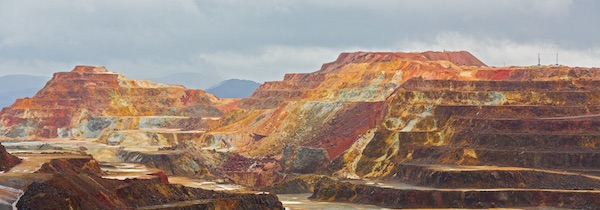As the global economy judders into an unsteady restart, stock markets rebound, and manufacturing grows, one thing that has been slow to take off is commodities prices.
As the global economy judders into an unsteady restart, stock markets rebound, and manufacturing grows, one thing that has been slow to take off is commodities prices.
A typically unloved asset class, most investors are still avoiding commodities since the collapse in manufacturing demand in February, and country lockdowns sent oil futures to negative levels in April. This caution has kept prices low for the most part, with asset managers increasingly believing that there is now considerable upside.
Jeroen Blokland, a senior portfolio manager for Robeco’s multi-asset fund, says the time has come to invest again.
“Out of all the risky asset classes, commodities have priced in the least amount of the global economic recovery that we see happening in the upcoming quarters. The combination of demand and supply rebalancing and a clear improvement in GDP growth numbers following this historical economic decline should push prices of industrial metals higher,” says Blokland in a monthly outlook report.
He says that industrial metals will continue to see a rebalancing of supply in the coming months and quarters, similar to oil production, where OPEC+ has already cut supply by almost 10 million barrels a day.
Robeco has increased its multi-asset funds’ weighting to commodities, with a focus on industrial metals.
Longer-term, Blokland argues commodities are well-positioned to take advantage of manufacturing’s return. Current evidence suggests that manufacturing will emerge more strongly from the coronavirus recession than the services industries, which are still subject to virus containment measures such as social distancing.
“The prevailing measures will have a longer-lasting impact on certain services-related industries than on manufacturing industries,” he says. “The latter represents the bulk of commodity demand. The fact that services purchasing managers’ indices (PMIs) around the globe fell to much lower levels and have since recovered by less than manufacturing PMIs supports this assumption.”
Industrial metal prices are already tentatively on the up, with battery metal copper trading at three-month highs on the London Metal Exchange in June, as PMI figures showed China’s manufacturing recovering faster than expected.
Blokland concludes: “We believe we are at, or just past, the low of the Covid-19-induced recession. This means global demand will start to improve from here. This will also be the case for commodities, and for industrial metals in particular.”
Other asset managers across the industry share the sentiment that economic recovery will put commodities back in the basket.
James Gutman, head of Investment Portfolios at wealth manager Dolfin, says that “even a modest economic recovery” should be enough to boost commodities prices.
Dolfin has been aggressively bullish on crude oil since April, but now considers that the metals market may have an interesting story in the coming months.
“As we move into the recovery, infrastructure spending – which is very metals-intensive – is likely to be a favoured avenue for government support. Finally, the weak dollar is very supportive and low interest rates are very supportive. Thus, even a modest economic recovery should be good for industrial commodities.”
Gutman notes that demand for metals was hurt by the initial global lockdown, but nevertheless, prices were already low to begin with.
“Mining companies have been under-investing over the past decade, working off excess capacity that had been put on during the pre-GFC price boom. At the same time, inventories have gradually been rebalanced. Cost curves have been providing a soft floor for prices as well.”
Gutman also warns that a lot hinges on an economic rebound: “I am very cautious about the global economic outlook, but I think industrial commodities have less down-side in the bearish scenario than would typically be the case in an average recession.”
But not everyone is convinced by the metals comeback theme. Real assets investment firm Cohen & Steers says that not enough has been done to shift inventory build-ups.
“Social distancing policies have led to mine shut-ins and production slowdowns globally, materially reducing supply. While supply reductions should be positive for metals prices, we believe they will not be large enough to offset the stark negative demand growth we anticipate in 2020,” says Cohen & Steers in a note to investors, published this month.
Cohen & Steers instead sees platinum group metals looking more promising, as platinum supply cuts have outweighed lost demand and resulted in a smaller surplus than in 2019.







